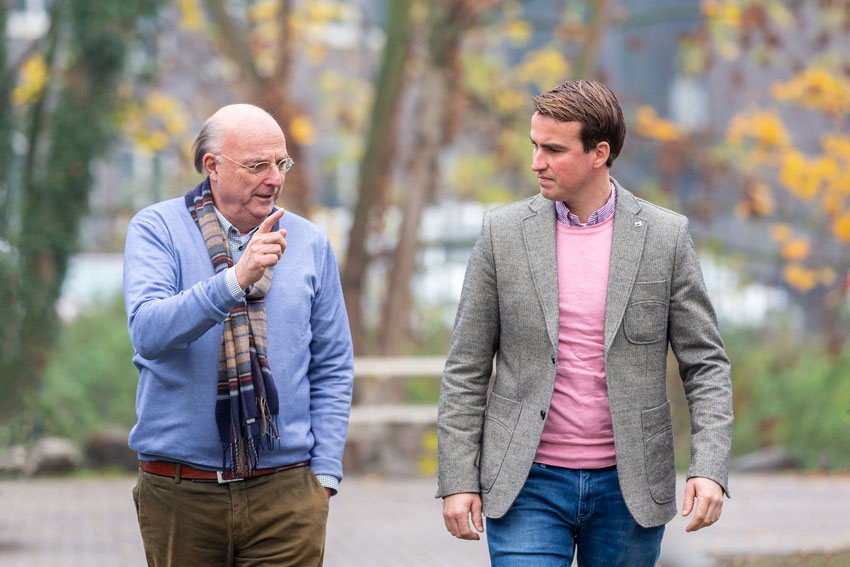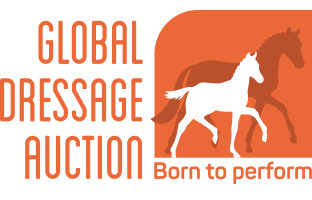Koos Poppelaars: Our auction is the response to the change of focus in dressage horse breeding
A new auction has been launched in the horse world: Global Dressage Auction. Another new auction? Yes, but this time just a bit different. To find out more, we have a chat with the initiators Abel Slippens and Koos Poppelaars.
What is so special about this auction?
Koos: “More and more embryos are flushed and auctioned. Certainly in jumping horse breeding that is daily business at the moment. And that trend is at the base of our initiative. What makes it different? We specialize in dressage, and for the moment, only in embryos.
Abel: “At the moment mainly embryos from showjumpers are being sold, but not much was happening yet for dressage. This seemed an opportunity. To us, this is not just about the auctioning of embryos; we’re focussing much more on the bigger picture.
As a buyer and seller, I have quite some experience at various auctions in Holland and abroad in recent years. I have noticed that things are sometimes not optimally arranged, both for the buyer as well as for the seller. What percentage do I have to pay? Am I insured? How does the foal or embryo get in my possession? And when? All these remaining questions never gave me much confidence. And I also experienced a lot of work afterwards.
With our online auction, we want to approach this differently. Besides that we focus on dressage and embryos, we only auction online. In our view, this is the only way to really reach that large international target group we’re aiming for. We also want to distinguish ourselves with offering only the best dressage genes, which can be purchased online on a transparent platform.”
Why is the market for jumping horse embryos very good, but is that not yet the case for dressage horses?
Koos: “The breeding of show jumpers has focused on the sport for quite some time now, crossing well-known dam-lines with popular stallions. In dressage, it is taking longer for this trend to develop. Show jumper breeders are much more into crossing a mare that has competed at higher level in the sport with a stallion that can do the same. Practice learns that a 1.50 mare and a 1.50 stallion produce offspring that in general will do the same. That is hard to prove, but something we can notice at the showgrounds. In dressage horse breeding, this is happening a lot less, but I am convinced the same applies to dressage as well.”
“In dressage horse breeding, more and more attention is being paid to dam-lines and things are slowly shifting into the same direction. The future of breeding is in the sport and nowhere else. Yet, as far as auctions are concerned, a lot of emphasis is being placed on the results at inspections. Despite the fact that in young horse tests, more and more attention is being paid to the talent for the Grand Prix. The focus is changing. You can also see that in breeding. You get a whole different generation of breeders who more and more focus on the sport.
With our auction we encourage breeders to look at the future. You should aim for Grand Prix times Grand Prix. That is not always possible at the moment, because there are still only few proven mares, but there are already a number of internationally proven stallions. And the demand is already shifting to performance breeding of a high-quality sport horse based on two proven parents.”
Abel: “Dairy farmers have embraced this years ago and have been flushing embryos from their best cows for decades. These embryos are transferred to mediocre cows in order to improve the population faster, in several different aspects. Horse breeding, and especially that of dressage horses, should also go more into that direction.”
What do you consider to be an interesting dam?
Koos: “It is a big plus when they have performed well themselves. Preferably at Grand Prix-level, but that is the ultimate of course. The direct maternal line must in any case be of such quality that someone wants to invest money in it. Think of a full sister or mother of a Grand Prix horse. For example, the auction will include embryos out of a full sister of Johnson, a D’Avie out of a full sister of a horse of an English team member, and an Escolar x Jazz x full sister of Don Schufro. For a breeder, on paper, these are the gems. If breeders want to auction an interesting embryo, they can of course let us know. We will auction several times throughout the year.”
What is the difference between buying a foal and an embryo?
Koos: “That is mainly what you can observe. Good movements makes a foal sell at auction. If you have an interestingly bred foal that shows itself less, it will yield less. While in potential, this could become a really nice horse. With embryos, you focus more on the paper, that’s all you’ve got. That should be 100% convincing. In general, embryos do not come onto the market very often, but in our own network we have already found some interesting objects for the auction.”
Abel: “You mainly sell the expectation value of a good horse, maybe not such a bad thing at all. After all, at a foal auction you see all those foals trotting around endlessly and if it doesn’t trot it won’t sell. While Anky van Grunsven, for example, always says that she can teach any horse to trot, but she can’t ‘make’ a walk or canter. But why do we make all those foals then trot at auctions?”
Koos: “You can overcome this with an embryo auction, because with these genetic combinations you’ll have a big chance that good horses will come of it. Maybe they will not all become top foals, but the chance that they will grow into good sport horses is much bigger.”
And how does that work with surrogate mares or the shipment of an embryo?
Abel: “Surrogate mares are very important to us and certainly deserve attention. I learned the hard way when I bought a pregnancy by phone at an offline auction. I did ask if the surrogate mare was well behaved and had size. When she got here, it turned out to be dramatic. She was small and you could barely get close to her and therefore not to the foal. Others may not be interested, but the quality of the surrogate mare really plays a very important role in the development of a foal. So, we also provide information about the surrogate mare with each embryo, such as size and character.”
Koos: “Everybody knows how it is to have a badly behaved mare in the herd or in your stable. And foals copy it all, that’s for sure.
Abel: “We also pay a lot of attention to after-sales services. Think of birth assistance, the registration of the foal (which is more complicated with embryos), microchipping, applying for a passport and transport. That little bit of extra service is very important to us. When you buy something expensive, you may also expect that all is properly arranged. It is the most pleasant to have the actual transfer at the moment the foal can be weaned and go to a rearing stable. In addition to embryos carried by surrogate mares, we will also be auctioning frozen embryos, which we will offer with a good insurance.”
Global Dressage Auction works with international partners to join forces in all parts of the world in both sales support and purchase support. The first country partners have been approached.



